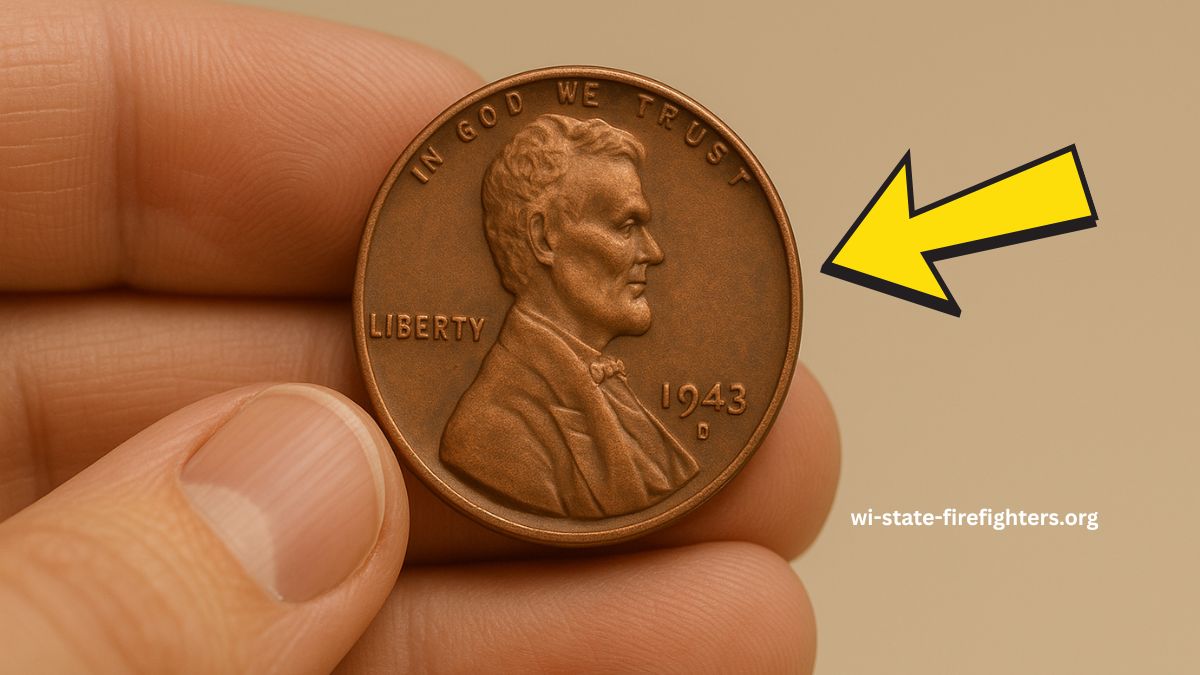In the world of coin collecting, few discoveries are as thrilling as finding a rare coin in everyday circulation. One such treasure is the 1943-D Lincoln Wheat Penny, a coin that, due to a unique minting error, is now valued at up to $250,000.
Astonishingly, this valuable penny might still be hiding in plain sight, nestled among the change in your pocket or coin jar.
The 1943-D Bronze Lincoln Wheat Penny: A Wartime Rarity
During World War II, the U.S. Mint faced a copper shortage, prompting a shift from traditional bronze pennies to zinc-coated steel ones in 1943. However, a few bronze planchets (coin blanks) were mistakenly used at the Denver Mint, resulting in the creation of the rare 1943-D Bronze Lincoln Wheat Penny.
Key Features:
- Year: 1943
- Mint Mark: “D” (Denver)
- Composition: Bronze (95% copper, 5% tin and zinc)
- Weight: Approximately 3.11 grams
- Magnetic: No (unlike the steel pennies of the same year)
- Estimated Value: Up to $250,000, depending on condition
- Known Examples: Very few authenticated specimens exist
The rarity of this coin stems from the accidental use of bronze planchets during a time when the Mint had transitioned to steel for penny production.
Identifying the $250,000 Penny
To determine if you possess this rare coin, consider the following steps:
- Check the Date and Mint Mark: Look for a 1943 date with a small “D” beneath it, indicating the Denver Mint.
- Test with a Magnet: Steel pennies are magnetic, whereas bronze pennies are not. If your 1943-D penny doesn’t stick to a magnet, it could be bronze.
- Weigh the Coin: A genuine bronze penny weighs about 3.11 grams.
- Examine the Color: Bronze pennies have a reddish-brown hue, unlike the silver-gray of steel pennies.
- Avoid Cleaning: Cleaning can reduce a coin’s value. If you suspect you have a rare penny, consult a professional before attempting to clean it.
Other Valuable Lincoln Wheat Pennies
While the 1943-D Bronze penny is exceptionally rare, other Lincoln Wheat Pennies also hold significant value:
| Year | Mint Mark | Composition | Notable Feature | Estimated Value |
|---|---|---|---|---|
| 1943 | None | Bronze | Philadelphia mint error | Up to $55,000 |
| 1943 | S | Bronze | San Francisco mint error | Up to $63,000 |
| 1944 | D or None | Steel | Post-war steel planchet | Up to $60,000 |
| 1955 | None | Copper | Double die error | $1,500 – $10,000 |
| 1909 | S | Copper | VDB initials, low mintage | $1,000 – $3,000 |
| 1922 | No D | Copper | Missing Denver mint mark | $500 – $3,000 |
| 1914 | D | Copper | Key date rarity | $200 – $4,500 |
The Significance of Minting Errors
Minting errors, such as the accidental use of incorrect planchets or die misalignments, contribute significantly to a coin’s rarity and value. The 1943-D Bronze Lincoln Wheat Penny is a prime example of how such errors can create highly sought-after collectibles.
The possibility that a $250,000 Lincoln Wheat Penny could still be in circulation adds an element of excitement to everyday transactions.
By familiarizing yourself with the identifying features of this rare coin, you might just discover a valuable piece of history in your own pocket. Always consult with a professional numismatist or coin grading service if you believe you’ve found a rare coin.
FAQs
How can I verify if my 1943-D penny is the rare bronze version?
Use a magnet to test the coin; if it doesn’t stick, it may be bronze. Weigh the coin to see if it’s approximately 3.11 grams. For confirmation, consult a professional coin grading service.
What makes the 1943-D Bronze Lincoln Wheat Penny so valuable?
Its value comes from its rarity due to a minting error during World War II, where a few bronze planchets were mistakenly used instead of steel, resulting in a limited number of these coins.
Should I clean my old pennies to enhance their appearance?
No, cleaning coins can significantly reduce their value. It’s best to keep them in their original condition and seek professional advice for preservation.

